Already one month gone since we arrived in Salvador. A lot has happen since that. Some of you may have continued to follow via the articles in French and or the Twitter feed, for the rest here is a summary of these 5 weeks.
August 27 to September 2
We stayed in Salvador’s terminal Nautico Marina the whole week. Our programme included:
September 3 to 9
Exploration of the Bahia dos todos los Santos.
The bay is huge and full of islands most of them are very nice, covered with tropical forest and hosting small very typical fishermen villages. Unfortunately, the north end of the bay is spoiled by the huge oil terminal and refinery on Madre de Deus island. Navigation in the bay is not easy as there are many shoals and some current but moorings were peacefull and enjoyable. We visited:
- Bom Jesus: a lovely mooring rght in the middle of the mangroves
- Brimabaras: suposedly a nature reserve actually a private island with some luxury villas and forbidden access Las Vacas
- Maria Guarda: a very nice and quite fishing community, we could buy some fresh crab meat from women who were just preparing it under a mango tree
- La Vacas no mamals but only tropical forest and birds
- Itaparica: the weekend/holidays resort for Salvador middle and upper class. We called there on a Thursday when it was quite and peacefull but unfortunately before we left on Satruday morning we could have a glimpse on how active and noisy it can be during the weekends
- Matarandiba: home of a tiny but popular waterfall.
- Unfortunately, we were advised to avoid sailing up the rio Paraguaçu and especially the city of Maragogipe were crime rate is very high and several cases of armed robery against visiting yachts have been reported.
- We returned on Salvador on Sunday evening same marina
September 10 to 17
Fast clearance in the early morning (Policia Federal and Capitania, Customs indicated that they are a federal administration and therefore don’t need to se us before we leave Brasil) we leave the marina at 10.
Target is to go down to Rio de Janeiro some 800 miles to the south but the weather forecast is not good with cold fronts generating strong winds and high waves on the second half of the passage. We decide to do it in 2 or 3 steps depending to the weather conditions en route. First stop will be Carvelas 300 miles from Salvador. This will be a fast journey with tail wind and reasonably flat sea. A quite one too, with very few ships and no fishing boats at night. In the morning before landing we had a fantastic encounter with many whales. We are close to the Abrolhos archipelago famous as a breeding ground for whales. Its quite an experience to see big whales rising their tail some ten metres above the sea surface to hit it violently and repeatidly, probably some male stuff to showoff in front of the females… At some stage I had to do an emergency tack to avoid two of them swimming casually “fin in fin” right under our bow.
Caravelas entrance is easy and the chanel well buoyed but it is a bit scary the first time, first you have to pass between the very low and flat coast and reefs and shoals just beneath the surface: in the moderate sea we had on that day, you know the coast and the shoals are there but you see nothing. Then we identified the first buoy from the fairway but the depth iwas reducing fast to a lower number than the chart datum (and we were only 3 hours from high tide), as the depth in the fairway was given at 2.5 m we were getting concerned that we may not have enough water. Add to that the fairway is narrow, not aligned at all with the range markers on shore and exposed to a stron lateral current… but finally everything went very smooth, the fairway is dredged to 4 metres and the buoys are well maintained (the job is done by the timber company which is using it daily for its ocean going barges.)
Caravelas is quite a strange place. Definitely not touristy (except it is the departure port for whale watching and diving trips to the Abrolhos – we saw only one diving boat going during the few days we were there). It’s an active fishing village yet there are only very small boats. The village is like it is at the end of the world and in another time scale (probably some 100 years ago). Very few cars, a bus station like you see only in the old movies, narrow cobble stones streets, pretty churches and squares, colorful painted houses and abandonned ruins. We spend there 2 very relaxing days (this is a place where nothing happen, ever) until the weather forecast improved just enough to let us continue our progression south .
We left Caravelas Sunday morning with the ebb tide , 25 knots tail wind but a relatively flat sea. According to the forecast, condition might deteriorate further south so we planned to stop and wait for improvement in Vitoria.
September 14 to 21
Given the forecast we sailed conservative with the jib only making never the less good speed all day without any effort. During the night the wind finally decreased and vired south east. We could hoist the main sail. Just before sunrise, we even had to get help from the engine to pass the Pontal de Regencia. We saw many fishing boat and in the morning we spotted a whale again. We thought they were all congregating in Abrolhios archipelagos 300 miles north and we were done with them until the southern latitudes. But no, during the whole day we saw very many of them swimming leisurely in pairs or small groups or doing their usual male stuff with the tail.
By mid day we were just offshore Vitoria. We downloaded a new grib file and studied the last forecast sent by email by our friend Michel. It confirmed the evolution already seen yesterday. The strong wind area is moving furthe offshore, leaving a 25 to 50 miles quiter wind all along the coast till Rio. Decision is rapidly taken to continue till at least Cabo Frio and possibly Rio (we had very little appetite for Vitoria anyway and the perspective of being trapped there for up to a week waiting for favorable winds to continue was not appealing to us).
The offshore area between Vitoria and Cabo Frio is the main oil and gas basin for Brasil and it’s covered with dozens and dozens of production platforms and oil rigs.This is generating a very heavy traffic of supply and anchor, survey, cable laying and other service vessels. This area is also on one of the busiest maritime route and a rich fishing ground. All this makes this area even more busy than our North Sea at the glorious time of the oil and gas boom. This make obviously sailing there at night an heavy burden on Reve à Deux crew. We have to be fully alert during our complete watch checking frequently the AIS , the radar and visulally the suroundings (small fishing boats have no AIS and being low and wooden they are not visible on the radar at more than 200 metres.) Often the second pair of eyes is summonned in the cockpit just to be sure.
On Tuesday morning the wind picked up again nicely from NE 15 to 18 knots and we were making good progress toward Cabo Frio. We are very tempted to make a stop there. Cabo Frio is famous for wonderfull coves and its cold but very clear water. We know that in Rio Bay the water is extremely polluted, swimming in clear water before getting there would be a treat. Unfortunately our ETA to Cabo Frio is at 2 AM: the clouds are obscuring the moon: it will be pitch dark and the 3 metres Easterly swell we are surfing on is likely to make the moorings incomfortably rolly. Therfore, no stop at Cabo Frio let’s continue to Rio.
As the sun rise, the wind is letting us down completely (but the swell subsides). We have to motor on till we can see the famous Sugar Loaf emerging from the fog some 15 miles ahead. But before entering the murky waters of Rio bay proper, we make our stop at Itaipu just for a last quick swim.
Late afternoon we enter the famous bay. Seen from a distance the city and its steep hills and rocks are at least as beautifull as we imagined but the bay water is dirtier than in our worst nightmare. It is grey brownish and littered with all kind of debris mostly plastics (bags of all size, food packaging diapers, bottles and containers etc). The next morning we will see a small turtle swimming in the middle of all that, wondering how and how long it can survive in such an awfull environment.
We chosen not to go too close to the city centre to be quiter and safer. We called in to Niteroi/Charitas Naval Club on the other side of the bay. We are welcomed by Marco a young retired naval officer, sailing passionate speaking perfect French.
Tuesday is dedicated to the formalities. For that we need to take the ferry to cross the bay and find the different administration in the old dock area. As Salvador police gave us an exit document (of the state of Bahia not Brasil) we are supposed to check in with them here. But at the address given by the marina (and written in our nautical guide) ther is now some kind of art exhibition hall. We find a Policia Federal HQ building nearby but after inquiring we are told that they don’t do immigration related formalities here anymore. The only solution proposed would be to go to Rio International Airport. We decide to give up Policia Federal: afterall, they are supposed to be federal, we have legally entered the country and our passeport are bearing the proper entry stamps… same apply for the Receita Federal (Customs). We then go to the Capitania dos Portos but by then it is already 15:00 and the public office just closed and they don’t open on Friday. This is bad: we want to leave on Sunday, we don’t want to comeback here on Monday. We start getting desperate and out of luck we enquire at the reception desk of a nearby Navy administration department where we are met by a young sailor, Nathan, speaking perfect English. We explain our misfortune and he kindly takes us to the main gate, negotiates with his colleague there, gets us in and after some 30′ we get the magic paper! Thank you so much Nathan! You saved our day!
![unnamed[1]](https://reveadeux.files.wordpress.com/2018/09/unnamed1.jpg?w=625)
By then it is time to cross the bay again and returen to the Club Naval. We are invited for a drink onboard Pegasus, Marco’s sailing boat together with his wife Rosanna. They lived in France for several years and they fell in love with our country, their daughter is still at the university in Lyon and they are going there in November for a couple of months. We spent a very nice evening with them exchanging info about what to see in France and in Brasil.
Friday is shopping day, we need to replenish our food supplies especially as we want to spent some time on Ilha Grande where there are no supermarkets. Marco and Rosana, very kindly drove us to their favorite supermarket in Niteroy where we can find lots of European products.
Saturday is our Tourist day. We want to go to Corcovado (the famous Christ statue) an see the legendary view of the bay from up there. We struggle a little to find the right bus but we get there in good time and we board the little train. Unfortunately, the entire summit including the statue is drowned in clouds. It’s like thick fog and it’s impossible to see anything. We go back down and take another bus for Copacabana. The cloudy weather has not discouraged the Cariocas who are crowding the beach and playing their favorite games and beach activites.
Saturday is for the usual boat check and preventive maintenance. Our plan is to leave for Ilha Grande (distant form 65 miles) in the evening in order to get there early morning. We finally leave with a beautifull sundown over the Sugar Loaf. When we get out of Guanabara bay, night is already there and we are blessed with the wonderfull view of Copacabana and Ipanema illuminated and overlooked by the Corcovado Christ illumnated too. A beautifull and very romantic moment.
The passage is uneventfull and around 4 AM we enter Ilha Grande bay. At the entrance of the bay there are many oil tankers and other cargo ships moored: there are several commercial harbours and large oil terminal in the bay. This is a bit worrying given that Ilha Grande is a unique nature reserve. Let’s hope the authorities are prepared to do the needfull to protect it in case of spillage or pollution.
At 5: 30 as the sun rise, we drop the anchor at Praia do Pouso. After busy Rio this is like paradize for us (by now you have understood that we are not great fan of cities ::)): clear and calm water, beautifull smal beach surrounded by tropical forest. We spent the rest of the day relaxing, swimming and enjoying the place. The next morning we go ashore for a walk across the Island to explore the famous beach of Lopes Mendes said to be the most beautifull in Americas and one of the best in the world which is actually very well possible: the place is really great and we can walk for several km on the beach without seeing any human being.

Next day we move to another cove called Saco de Ceu completely protected from all directions. Water is clear and warm, we take the opportunity to check the boat bottoms. We are experimenting with Copper Coat: a permanent antifouling (10 years according to the datasheet) based on pure copper metal powder diluted in hard epoxy resin and I must say that, so far, it behave better than a traditional anti fouling paint. The hull and the apendages are actually still fairly clean after 3 months in warm waters: just a thin film of brown algae that go away very easyly with a sponge. It is also much better for the environement as, as soon as the epoxy has hardened, you can brush it as many times as you need, the product is staying on the hull instead of going away in the water like traditional antifouling. Let’s see on the longer time how it will perform.
On Thursday we go to Angra Do Reis to buy some groceries and do the usual formalities at Capitania dos portos. But there we have a bad surprises. The first marina (Iate Club Aquidaba) initially let us in but after few minutes an employee come and tell vehemently us to leave at once, removing our mooring lines from the dock.
In the next Marina (Piratas) we could stay free of charge for a couple of hours, enough to go to the Capitania. There the navy officer tells me that he can’t check me in because I have not checked out from Rio. (Capitanias are separate jurisdictions, not related to the federal structure) . He kindly explain that I have to go back to Rio to get the exit stamp, without it I won’t be able to enter any other prort in Brasil… However, we can go to Rio Capitania by bus if we wish so. Tomorrow is Friday, based on previous experience we prefer to wait till Monday, to make sure the public office will be open. With very heavy thunderstorm in the late afternoon, we moor by the Bomfim chapel for the nigh and return to Ilha Grande first thing the next morning. We moor at Lago Azul a very nice anchorage at the north tip of the island.
There we meet Robert and Armelle on Aquadoria who are just back from 2 trips in Patagonian Channels and they kindly let us have their notes and advices about the best moorings and the places to go or not. We spent great moments with them.
Sunday is busy day in this supposedly secluded cove. Boats, (motor and sailing) loaded with weekenders are coming from everywhere often with loud music and always quite fast to enjoy the place for few minutes or the whole day. It is very tiring. By lunch time we returnt to Angra to try and find a good place to leave the boat while we go to Rio tomorrow. We choose the Angra do Reis Marina Club which is said to be very welcoming in our guide. The place looks nice but the admitance is quite complicated, the guard wants to make sure that we are not going to use the facility or leave before paying the 230 reals (about 50 Euros) dayly fee. We finally manage to find the Comodore and the deal is settled. We pay 250 now and the rest on Tuesday morning before leaving. In the mean time we went to the restaurant managed by Michel (who also owns a very nice gastronomic restaurant in Jacancagua) and we enjoy our first caipirinha since we get in Brasil (prepared by a cocktail master such as Michel it was delicious)
Monday October 1
Michel very kindly offered to take us to the bus Termimal and at 6:30 he is at the gate waiting for us. We catch the 7:00 bus and arrive in Rio around 10:00 in spite of the heavy traffic jams. Getting into Rio by land from the west is quite a choc. For kilometers one can see many favelas as well as peole sleeping in the middle of the motorway. We are glad to be born in the right environment.
A quick VLT (the new tramway build for the Olympics) trip to Praça XV and we are at Capitania dos Portos. The public office is open but they are not sure how to deal with us and send us back to the main gate. There the officer on duty negociates for some time on the phone to finally accompany us back to the public office where we get the needed stamp in a few seconds! Then starts another experience of Brasil administrative efficiency. Our hydrogenerator was suffering technical problem and after discussion with the manufacturer it was decided to send it back to France for repair. We went to the central post office to ship it as express parcel. At the counter the ladies did their best to help and find the suitable box, pack it properly and started to enter the necessary shipping information in the computer. That when the nightmare started: we had to fill dozens of forms, to sign tens of documents, search with the employees (3 of them) for the right export code and so on. Finally after more than 2 hours at the counter, all documents were stamped and we could pay the shipping fee (760 reals = 180 euros for a 4 kg parcel) we hope it will arrive safely in France. We will not try to get it back while we are still in Brazil but rather in Uruguay were formalities are said to be a little simpler.
By 19:00 we were back at the club enjoying one of Michel’s cocktails
To be continued



























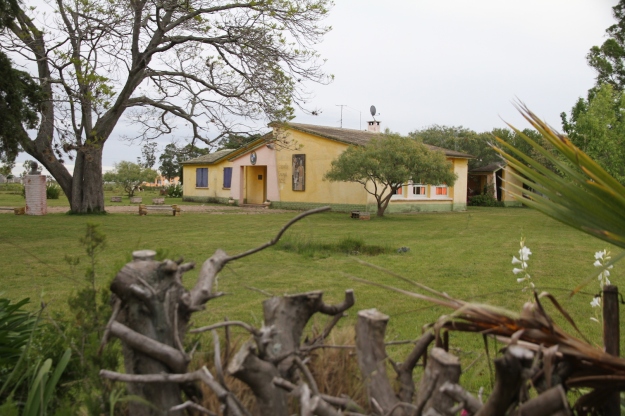






 pour revenir au soleil levant.
pour revenir au soleil levant.





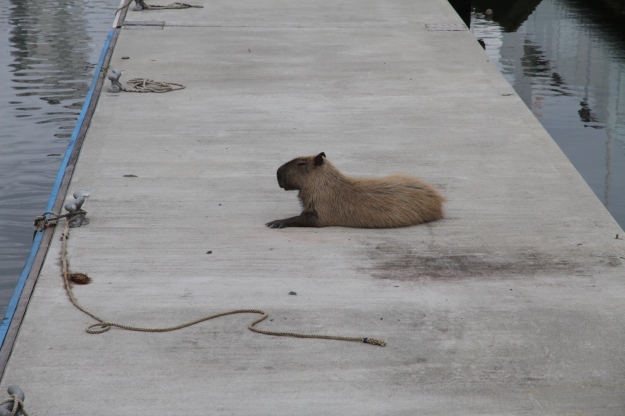























 sur la plage c’est vraiment le bon endroit. Quelques logements sont proposés dans le village et quelques petits hôtels de luxes sont installés dans la baie sur les plages sur la rive en face du village. Un bateau taxi fait la navette dans toute la baie pour vous y déposer.
sur la plage c’est vraiment le bon endroit. Quelques logements sont proposés dans le village et quelques petits hôtels de luxes sont installés dans la baie sur les plages sur la rive en face du village. Un bateau taxi fait la navette dans toute la baie pour vous y déposer.




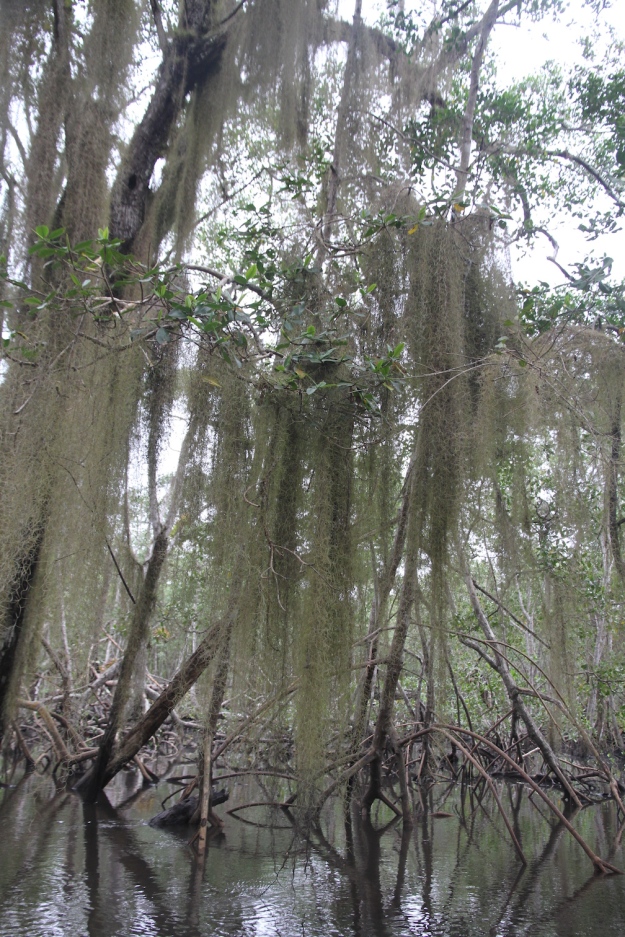
 l’endroit comme un loc Écossais avec des palmiers et un climat tropical mais là c’est le climat qui se met aussi au diapason de l’Écosse : il ne fait plus que 20°. L’après midi passe sous la pluie et nous mettons nos cirés cotten pour remonter la baie jusqu’à un mouillage tranquille à son embouchure. Demain nous aurons ça de moins à faire pour notre prochaine étape.
l’endroit comme un loc Écossais avec des palmiers et un climat tropical mais là c’est le climat qui se met aussi au diapason de l’Écosse : il ne fait plus que 20°. L’après midi passe sous la pluie et nous mettons nos cirés cotten pour remonter la baie jusqu’à un mouillage tranquille à son embouchure. Demain nous aurons ça de moins à faire pour notre prochaine étape.




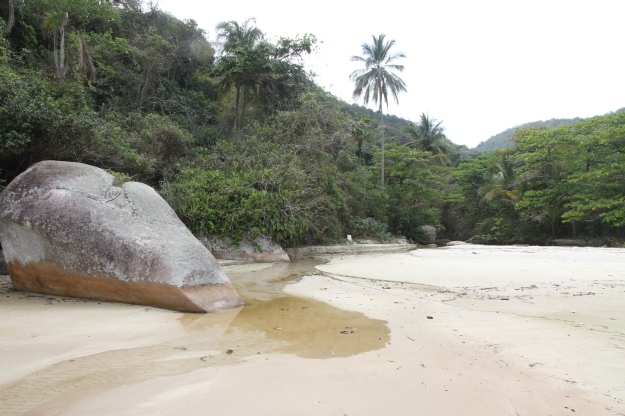







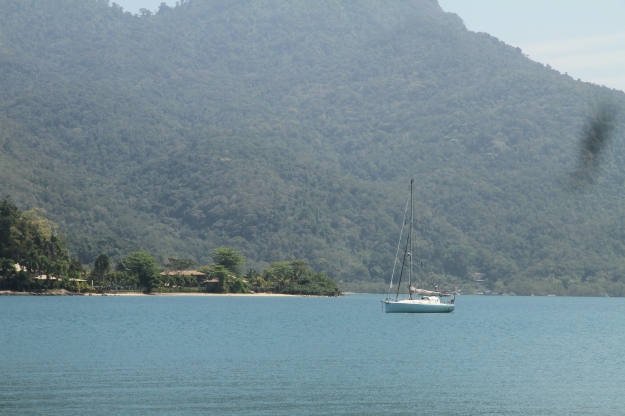














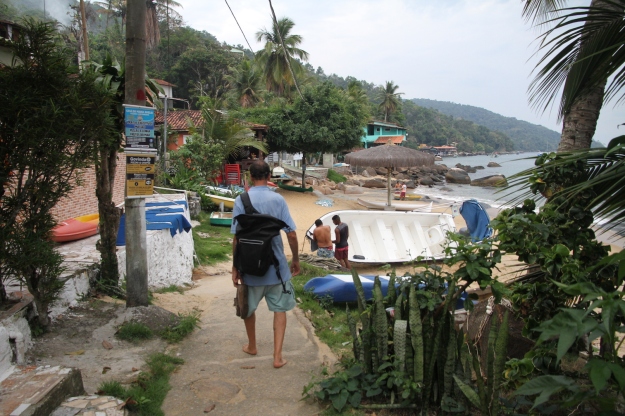

































![unnamed[1]](https://reveadeux.files.wordpress.com/2018/09/unnamed1.jpg?w=625)





